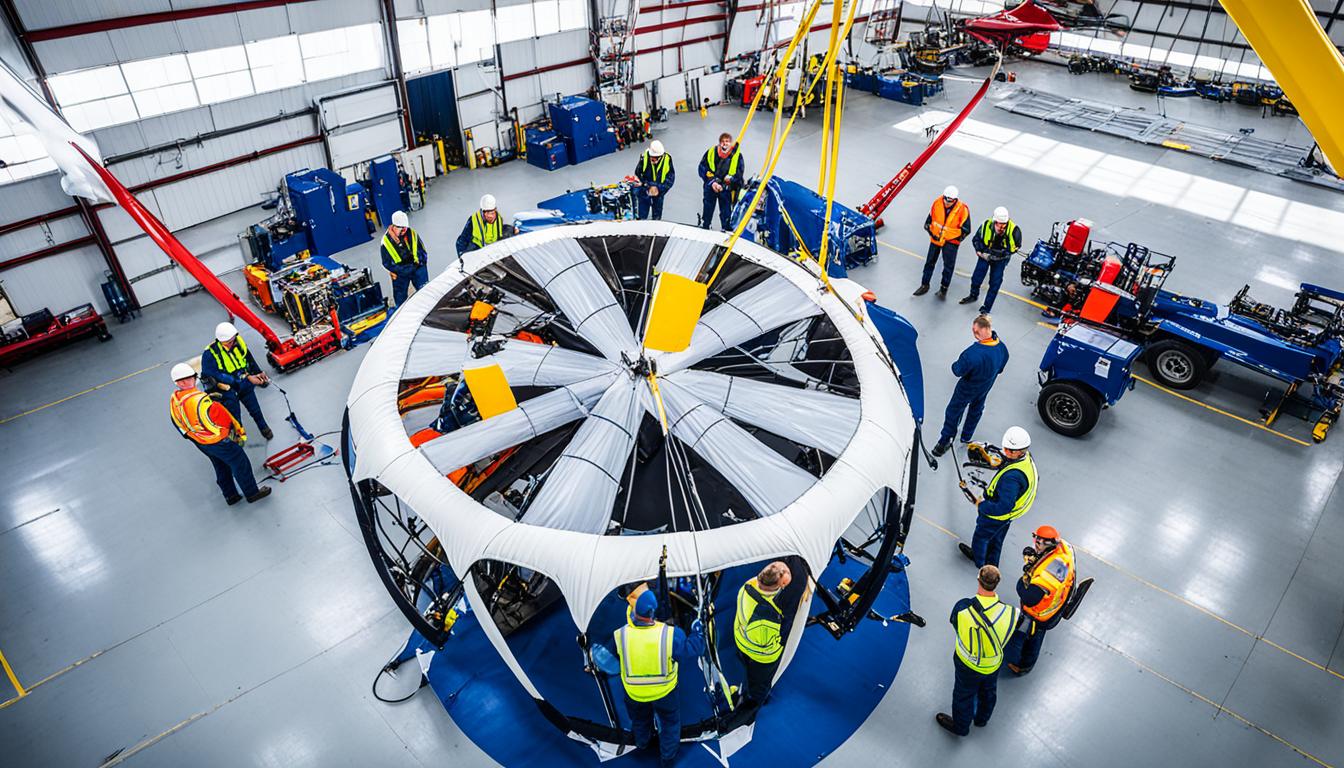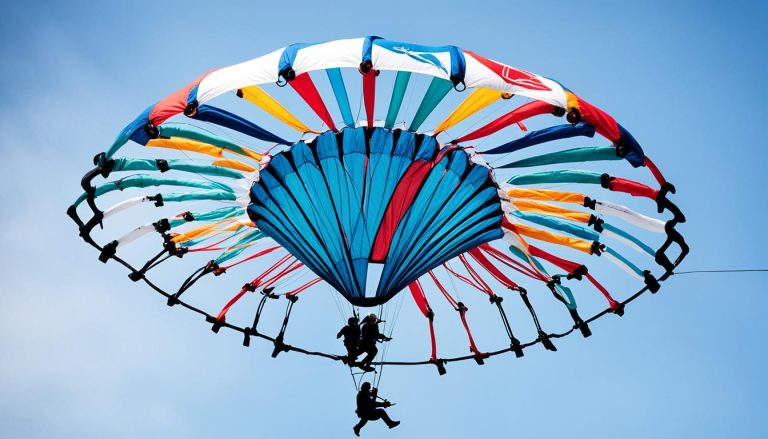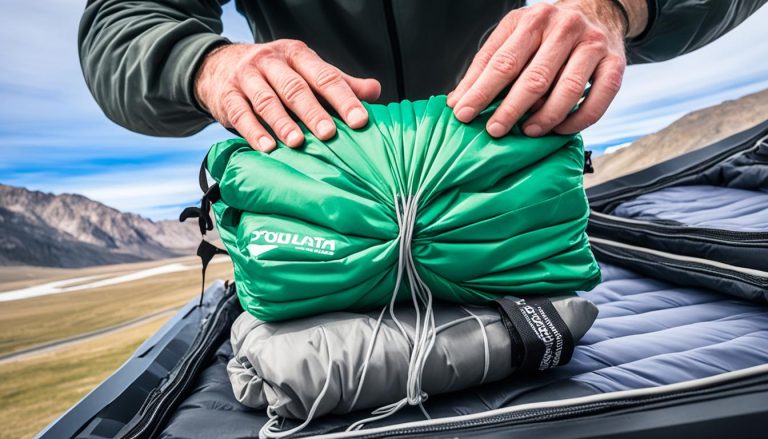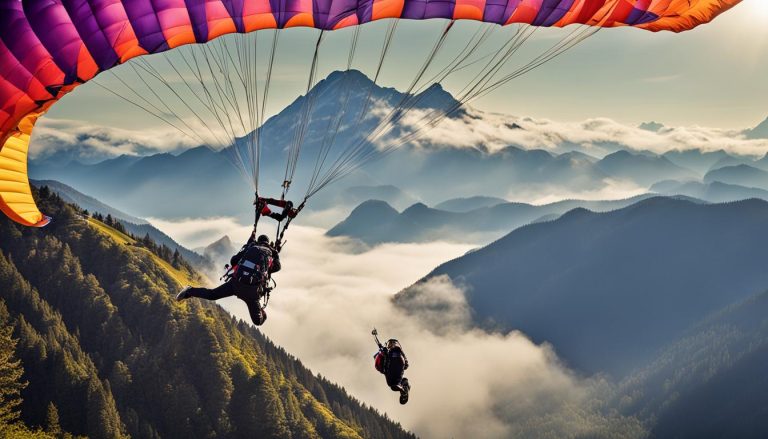The Importance of Regular Parachute Maintenance
Regular parachute maintenance and care play a vital role in ensuring the safety and reliability of parachutes during skydiving adventures. Upholding a routine maintenance schedule is crucial for maintaining the integrity and performance of parachute equipment.
By conducting regular inspections, repairs, and replacements, skydivers can minimize the risk of malfunctions and ensure their gear functions properly when needed. Regular parachute upkeep offers a multitude of benefits, including:
- Enhanced safety: Timely maintenance activities help identify and address any potential issues or damage, ensuring that parachutes operate at their optimal level of safety.
- Extended lifespan: Proper care and maintenance can help prolong the lifespan of parachutes, allowing skydivers to enjoy their equipment for an extended period.
- Peace of mind: Knowing that parachutes are in top condition provides skydivers with peace of mind and allows them to focus on the exhilarating experience of skydiving.
To maintain parachute equipment effectively, it’s important to follow industry best practices and guidelines provided by the manufacturer. This involves regular inspections, conducting proper repairs using approved techniques and materials, and storing parachutes in a suitable environment. By prioritizing parachute maintenance, skydivers can ensure both their safety and the longevity of their equipment.
Canopy Inspection and Maintenance
One important aspect of parachute maintenance is canopy inspection. Trained professionals thoroughly examine the lines, sliders, and skin of the canopy to assess its overall condition. This inspection process helps identify any potential issues or damage that could affect the parachute’s performance. If necessary, repairs such as relines, patches, or part replacements can be carried out to ensure the canopy is in optimal condition. Regular canopy inspections are essential for maintaining the safety and functionality of parachutes.
During a canopy inspection, parachute riggers follow specific protocols to ensure a thorough assessment. They meticulously check each component for signs of wear and tear, paying particular attention to the lines that bear the weight of the canopy. Any fraying, knots, or twists in the lines can compromise the parachute’s stability and control.
The sliders, which control the speed and inflation of the parachute, are examined for proper functionality and any signs of damage. This includes checking for stress marks, cracks, or broken parts. Additionally, the canopy’s skin is inspected for punctures, tears, or abrasions that could compromise its integrity.
If any issues or damage are detected during the inspection, trained riggers will carry out the necessary repairs using proven parachute repair practices. This could involve replacing damaged sections of the canopy, patching small holes or tears, or even relining the entire canopy if needed. The repairs are done in accordance with parachute repair protocols to ensure that the integrity and performance of the parachute are maintained.
Benefits of Regular Canopy Inspections
Regular canopy inspections offer several benefits to the skydivers and ensure the safety and functionality of the parachute:
- Early Detection of Issues: By conducting regular inspections, potential issues or damage can be identified early before they escalate into more significant problems that could compromise the parachute’s performance during a jump.
- Enhanced Performance: Canopy inspections and maintenance help optimize the parachute’s performance by ensuring that all components are functioning properly. This enhances control, stability, and responsiveness during a jump.
- Improved Safety: Regular inspections minimize the risk of malfunctions or accidents by addressing any potential issues that could compromise the parachute’s safety. Skydivers can have peace of mind knowing that their equipment has been thoroughly inspected and maintained.
To maintain the safety and functionality of parachutes, it is recommended to schedule regular canopy inspections and follow established parachute inspection protocols. Consulting with experienced riggers and following their guidance regarding maintenance practices will help ensure the longevity and reliability of parachute equipment.
Shipping and Pricing
When it comes to maintaining your parachute, proper shipping and pricing are essential considerations. Sending your parachute for maintenance involves a comprehensive inspection process to ensure its safety and functionality. The inspection fees vary depending on the type of parachute, whether it’s a sport, tandem, or powered parachute.
After the inspection, the parachute maintenance department will provide you with a quote for the necessary repairs. The repair pricing is determined based on the specific issues identified during the inspection. It’s important to note that no billable repairs will be performed without your consent, giving you complete control over the maintenance process.
If you’re wondering about the cost of parachute maintenance, it’s advisable to contact the maintenance department directly for accurate and updated information. The parachute maintenance cost may vary depending on factors such as the scope of repairs required, the type of parachute, and the availability of spare parts.
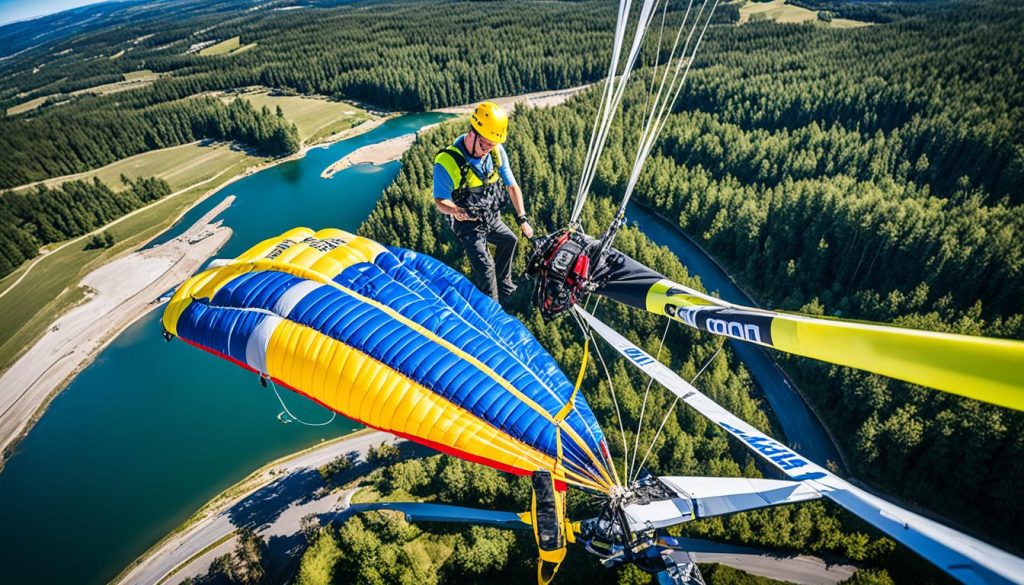
In summary, understanding the shipping process and pricing for parachute maintenance is crucial for proper planning and budgeting. Regular maintenance ensures the safety and longevity of your parachute, allowing you to enjoy your skydiving adventures with peace of mind.
Skydiving Emergency Procedures
Skydivers understand the importance of being prepared for emergency situations that may arise during a jump. With proper knowledge and regular practice of emergency procedures, skydivers can ensure their safety and make informed decisions when faced with unexpected challenges. This section will outline essential skydiving emergency procedures, including deployment of emergency parachutes, assessing canopy functionality, and training for different types of malfunctions.
Deployment of Emergency Parachutes
When faced with an emergency situation during a skydive, deploying the emergency parachute at the correct altitude is crucial. Skydivers must be familiar with the recommended deployment altitude and act promptly to initiate the process. It’s essential to remain calm and follow proper procedures to ensure a successful deployment and safe descent.
Assessing Canopy Functionality
After deploying the emergency parachute, it’s important to assess the functionality of the canopy. Skydivers should observe the opening sequence and check for any signs of malfunction, such as line twists or a misshapen canopy. Understanding how to assess canopy functionality allows skydivers to make informed decisions and take appropriate actions to ensure a safe landing.
Training for Different Types of Malfunctions
Skydivers should undergo comprehensive training to prepare for various types of parachute malfunctions. This training equips them with the knowledge and skills to identify and respond to malfunctions appropriately. Skydiving emergency procedures typically include practicing emergency drills, such as cutaway and reserve deployments, ensuring that skydivers can react quickly and effectively in high-pressure situations.
The ability to remain calm and follow proper emergency procedures can be the difference between a successful outcome and a potentially dangerous situation.
Regular practice and review of emergency protocols are essential in maintaining preparedness and confidence when skydiving. By mastering emergency procedures, skydivers can mitigate risks, enhance their safety, and enjoy the exhilaration of the sport with peace of mind.
| Emergency Procedure | Description |
|---|---|
| Emergency Parachute Deployment | Deploy the emergency parachute at the recommended altitude to ensure a safe descent. |
| Assessing Canopy Functionality | Observe the opening sequence and assess the functionality of the canopy for any signs of malfunction. |
| Training for Malfunctions | Undergo comprehensive training to identify and respond to various parachute malfunctions. |
Softie Parachute System Maintenance
The Softie parachute system is a crucial component of emergency preparedness for skydivers. To ensure its reliability and functionality, regular maintenance and care are necessary. By following proper maintenance practices, you can extend the lifespan of your Softie parachute system while maintaining its optimal performance during emergencies.
Proper Storage
Proper storage is essential to prevent damage to your Softie parachute system. Store the parachute in a well-ventilated area that is away from direct sunlight, oils, and acids. This will help protect the fabric, lines, and other components from deterioration caused by exposure to harsh conditions.
FAA Regulations and Inspection
In the United States, the FAA mandates that emergency parachutes, including the Softie parachute system, be inspected and packed by a licensed rigger within specific timeframes. This ensures that the parachute is thoroughly checked for any signs of wear, damage, or malfunction that may jeopardize its effectiveness. Compliance with these regulations is crucial for maintaining the safety and reliability of your Softie parachute system.
Preflight Inspection Routine
Establishing a preflight inspection routine is an important part of Softie parachute system maintenance. Regularly inspect your parachute for any stains, wear, corrosion, or signs of damage. Pay close attention to the hardware, such as buckles and connectors, to ensure they are functioning properly. By conducting these inspections, you can identify any potential issues early on and take appropriate action to address them.
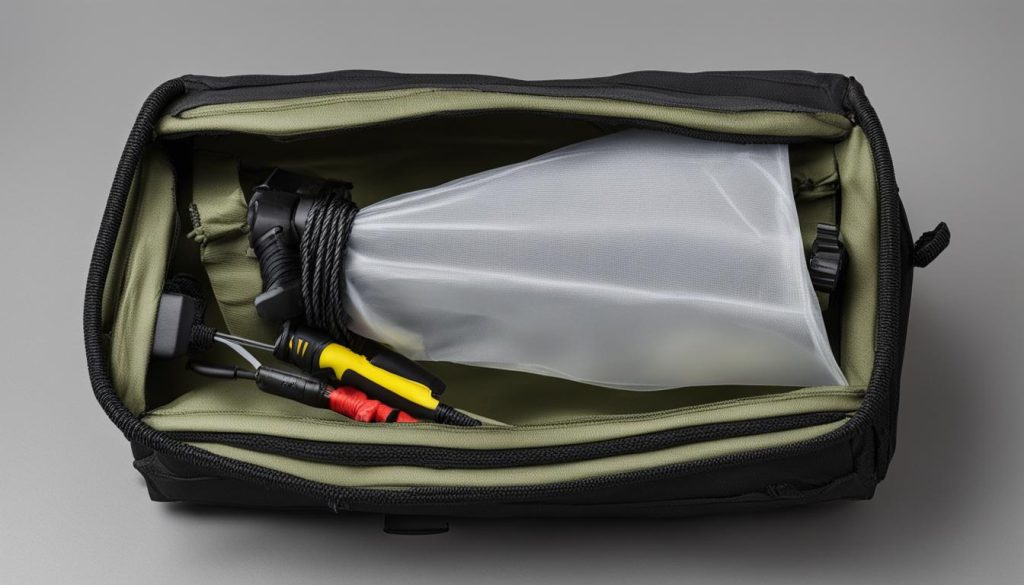
Finding a Qualified Parachute Rigger
Ensuring proper maintenance and inspection of parachutes is essential for skydivers’ safety. To guarantee the highest standards of quality, it is crucial to find a qualified parachute rigger. Licensed riggers have the expertise and knowledge required to perform meticulous parachute inspections, repacking, and repairs, in compliance with FAA regulations.
Establishing a relationship with a reputable rigger in your area is highly recommended. By working closely with a licensed rigger, you can follow a regular schedule for inspections and repacking, minimizing the risk of potential equipment malfunctions. It’s important to note that emergency parachutes must be inspected and repacked by licensed riggers within specific timeframes, as mandated by the FAA.
When searching for rigging services, consider reaching out to local sports parachuting centers. These centers often have reliable connections with licensed riggers. Additionally, checking the local phone directory under categories like “parachutes” or “parachuting” can help you find qualified riggers near you.
Benefits of working with a licensed rigger:
- Compliance with FAA regulations regarding parachute inspections and repacking.
- Expertise in identifying potential issues or damage during inspections.
- Proficiency in performing repairs or replacements to ensure optimal parachute functionality.
- Peace of mind knowing your parachute is in the hands of a qualified professional.
“Working with a licensed rigger not only guarantees the safety of your parachute but also enhances your overall skydiving experience. Their expertise and attention to detail can make a significant difference in maintaining the functionality and reliability of your equipment.”
Take the necessary steps to find a licensed rigger for all your parachute maintenance needs and enjoy the peace of mind that comes with knowing your equipment is in the hands of a reputable professional.
| Key Considerations | Benefits |
|---|---|
| Compliance with FAA regulations | Ensures adherence to safety standards |
| Expertise in inspections and repairs | Identifies potential issues and ensures optimal functionality |
| Established relationship | Allows for regular inspection and repacking schedule |
| Reputation and expertise | Provides peace of mind and confidence in the rigger’s abilities |
Conclusion
Proper maintenance is of utmost importance when it comes to parachutes. Regular inspections, repairs, and careful storage ensure the safety and performance of this crucial skydiving equipment. By following the necessary maintenance procedures, skydivers can minimize the risk of malfunctions and make the most of their skydiving experience.
Adhering to regulations and seeking the assistance of qualified riggers play a vital role in parachute care. Working with licensed professionals who are well-versed in inspection and maintenance protocols guarantees that your parachute is in optimal condition. This not only enhances safety but also extends the lifespan of your equipment.
In conclusion, taking care of your parachute is essential for both safety and longevity. By prioritizing regular maintenance and employing the services of reputable riggers, you can enjoy a secure and rewarding skydiving adventure. Always remember that a well-maintained parachute sets the stage for unforgettable experiences in the sky.

